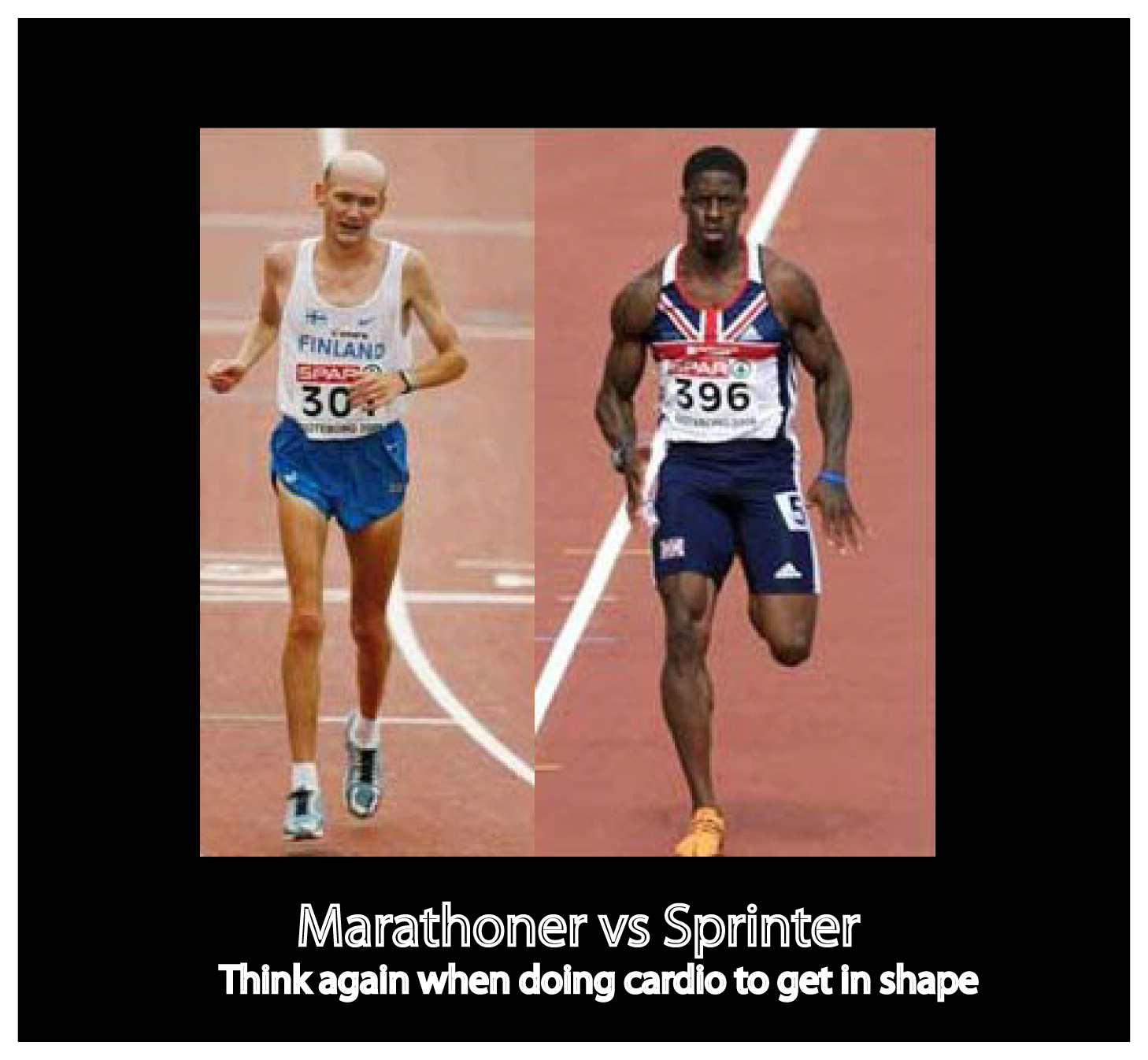we delivers enough to blog about

HIIT vs. Steady State cardio: Which is better for fat loss?
By Nick Hall
HIIT stands for High Intense Interval Training. In brief, short bursts of intense exercise at maximal effort followed by a rest period then repeated, such as a 10 second or 20 second sprint with a 1 or 2 minute rest period. HIIT has increased in popularity in recent years with claims to improve body composition in much shorter periods of time.
Steady State (SS) cardio can be running, riding, swimming or rowing at a constant or sub-maximal pace for a longer period, such as a jogging for 5km. The claims are (depending on what literature you have read) that performing SS cardio at a pace of somewhere around 65% of your maximum heart rate is the optimum rate for burning fat.
Treadmills, cross trainers and stationary bikes found in commercial gyms have built in “fat burning zone” workouts that you can complete in comfort while watching the evening news on an inbuilt TV or reading the newspaper. But does it actually result in better fat loss?
When it comes to exercise, most people would want the biggest fat loss in the least amount of time. In terms of burning calories, exercise alone is fairly inefficient. It takes a long time to burn a lot of calories from exercise. We therefore need to look at the hormonal response from exercise that will aid fat loss.
We know that insulin is a growth and fat storage hormone. When blood sugar levels increase, insulin stores blood sugar as glycogen in the cells of your body. When those cells are full of glycogen, insulin will then store blood sugar as fat. Ideally from exercise we want better muscle glycogen utilisation and better insulin sensitivity. The more our muscle cells become sensitive to insulin the less blood sugar will be stored as fat.
Leptin is produced by your fat cells. Leptin communicates to the brain that you either have to much fat, you need more fat or that excess fat should be burnt. Leptin also helps to regulate hunger. If you are leptin resistant, your brain can’t hear the signals from leptin telling you to burn more fat.
Can exercise help create better insulin and leptin sensitivity?
An article published in 2008 by the International Journal of Obesity directly compares HIIT against SS. One group was subjected to 15 weeks of HIIT, a second group was subjected to 15 weeks of SS exercise and a control group maintained their normal exercise regime for 15 weeks. The HIIT protocol was 20 minutes of intervals on a stationary bike compared to up to 40 minutes of SS exercise on a stationary bike. The findings after the 15 weeks of training were significant.
Both insulin and leptin sensitivity of the HIIT group were significantly improved. The HIIT group decreased fasted insulin levels by 31% compared to a 9% decrease of the SS group. Post training leptin levels of the HIIT group were also reduced whereas the SS group leptin levels were similar.
Over the 15 weeks, the average fat loss for the HIIT group was 3.94kg compared to only 1.15kg average weight loss to the SS group. The conclusion of the study was 3 x 20 minute HIIT sessions over 15 weeks resulted in significant reductions of fasting insulin, leg fat, abdominal fat and total fat compared to the same frequency of SS exercise. These results were achieved in half the time per session (20 minutes) compared to 40 minutes for the SS group.
A body shape comparison can be made between that of a marathon runner and an Olympic sprinter. The marathon runner runs very long distances often at less than maximum output. The sprinter runs very short distance very few times but at maximum output. Both are lean, however given the amount of work the marathon runner does, the Olympic sprinter looks far better with far less output.
We don’t necessarily have to sprint; other forms of exercise can create this response such as body weight exercise (Push ups, Squats etc), push bike or stationary bike, Rowing machine, Free weights or kettlebells
When it comes to exercise prescription, exercise should always be determined by the goals of the individual. If your goal is to run a 10km race or a half marathon then running at a steady pace for a long duration will be beneficial. If the goal is fat loss, HIIT appears to provide greater hormonal adaptations that will assist with fat loss.
Below is a free 15 minute presentation on how you can get better results from 15 minute HIIT workouts.
References:
Trapp, E, Chisholm, D, Freund, J and Boutcher, S. The effects of high-intensity intermittent exercise training on fat loss and fasting insulin levels of young women. International journal of obesity
Mercola, Dr J. Insulin and Its Metabolic Effects
Rosedale, Dr R. This hormone makes counting calories irrelevant. Mercola.com
